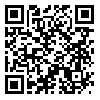BibTeX | RIS | EndNote | Medlars | ProCite | Reference Manager | RefWorks
Send citation to:
URL: http://jstnar.iut.ac.ir/article-1-800-en.html
It is important to investigate the genetic diversity and evaluate symbiotic effectiveness of the indigenous rhizobial population. It helps understand the responses of indigenous isolates to different rhizobial inoculants. In spite of the importance of bacterial diversity, there are a few scientific reports about it in Iranian soils. Genetic diversity of 150 isolates of Sinorhizobium isolated from Hamadan soils was studied by using PCR / RFLP 16S-23S rDNA technique. The results showed that all isolates clustered in three different groups. Group (I) formed 122 isolates and they were quite similar to Sinorhizobium meliloti from viewpoint of genetic characteristics. Twenty five isolates were clustered in Group (II) and they belonged to Sinorhizobium medicae. Group (III) had two isolates and they were new species and quite different from the other groups. Shannon diversity index was different within eleven different land units (Medium gradient mountains, Level lands, Plateau, Foot slopes, Depressions and Composite land) and there was a correlation between Shannon index and some soil properties. Difference in Similarity index showed that Sinorhizobium groups in each land unit were different.
| Rights and permissions | |
 |
This work is licensed under a Creative Commons Attribution-NonCommercial 4.0 International License. |





